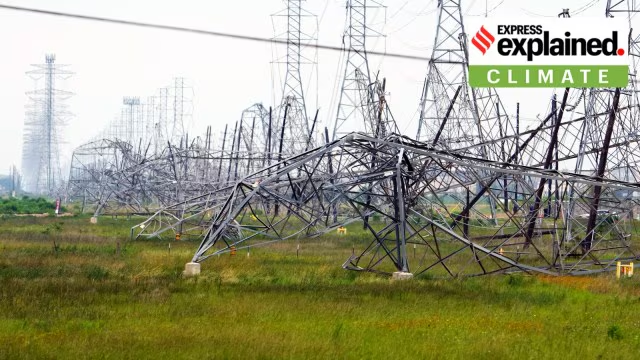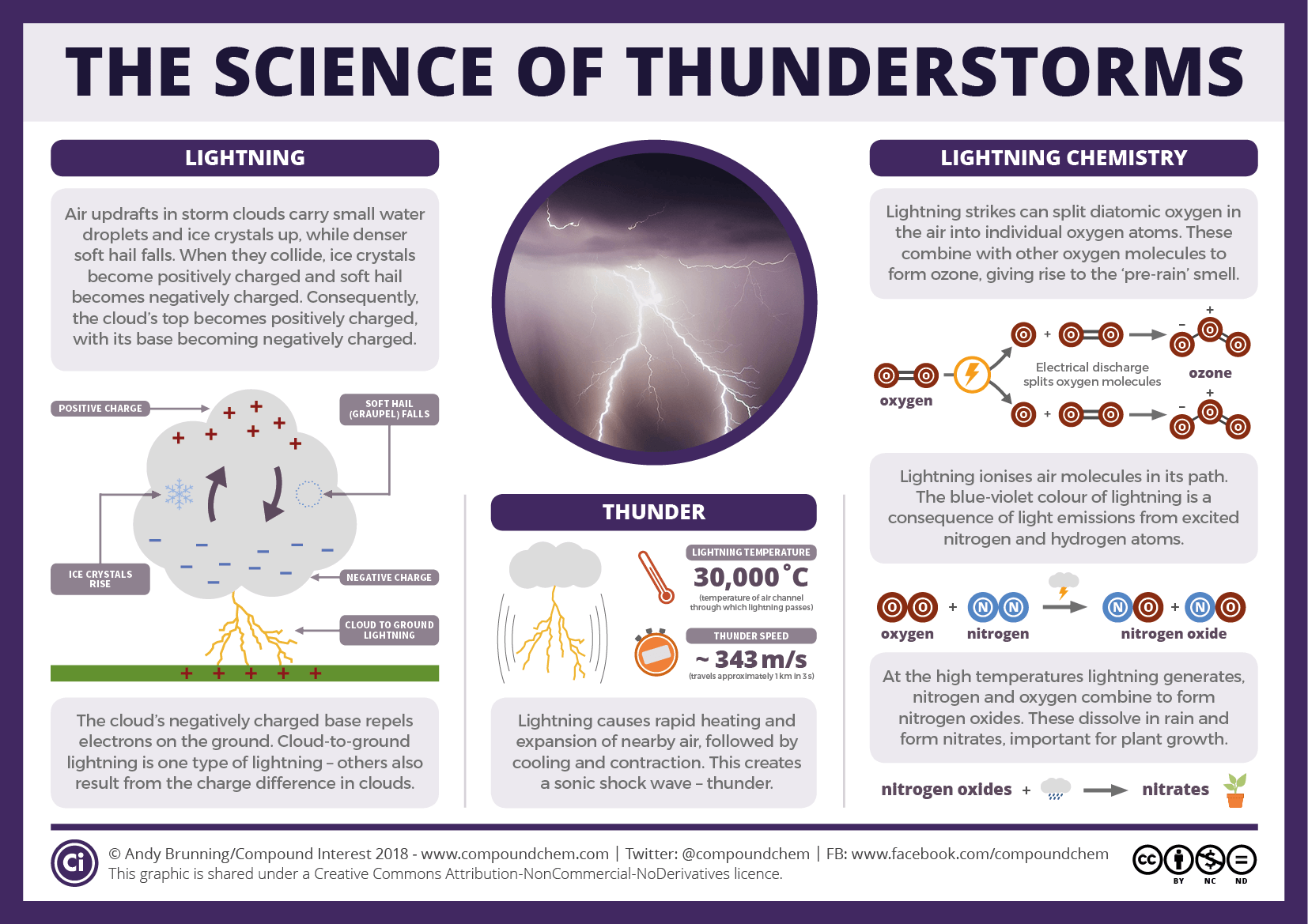Description

Copyright infringement not intended
Picture Courtesy: https://indianexpress.com/article/explained/explained-climate/thunderstorms-wind-climate-change-link-9338924/
Context: The impact of climate change on thunderstorms is a topic of growing concern among scientists and meteorologists.
Key Highlights
Increased Moisture Content
- Warmer Air Holds More Moisture: As the planet warms due to climate change, the atmosphere holds more moisture. This increased moisture content enhances the capacity of severe storms to carry precipitation, resulting in heavier rainfall.
- Condensation and Cloud Formation: The additional moisture in the atmosphere leads to increased condensation, facilitating cloud formation. The heat energy released during condensation fuels the development of thunderstorms, contributing to their intensity.
Atmospheric Instability
- Enhanced Instability: Warming temperatures may also increase the instability of the atmosphere. Greater instability provides additional energy for lifting moist air rapidly during storms, potentially intensifying thunderstorm activity.
Uncertainty and Complexity
- Complex Factors: While there is a theoretical understanding of how climate change influences severe storms, predicting specific outcomes remains challenging. Numerous factors, including atmospheric dynamics and regional variations, interact to shape storm behaviour.
- Difficulties in Attribution: Determining the direct impact of climate change on individual storm events is complex. Other factors, such as natural variability and local weather patterns, can also influence storm development and intensity.
Implications for Insurance and Losses
- Financial Consequences: Thunderstorm damage, including heavy rainfall, hail, tornadoes, and strong winds, can result in significant losses for homeowners and insurers. These losses are not limited to coastal areas but can occur in regions across the United States.
- Insurer Challenges: The increasing frequency and severity of thunderstorm-related losses pose challenges for the homeowners insurance market. Insurers are experiencing financial strain due to the growing number of claims resulting from severe storms.
|
Building resilience to the impacts of severe storms, including infrastructure upgrades and improved risk management practices, can help communities mitigate the potential consequences of climate change.
|
Thunderstorms
- Thunderstorms are dynamic weather phenomena characterised by the presence of lightning and thunder.
- They typically occur within a type of cloud called cumulonimbus and are often accompanied by strong winds and heavy precipitation, which can include rain, snow, sleet, or hail. While some thunderstorms produce little to no precipitation, others can unleash severe weather events such as large hail, strong winds, and tornadoes.
- Thunderstorms may form in various geographic locations but are most common in mid-latitude regions where warm, moist air from tropical latitudes interacts with cooler air from polar latitudes.

Formation and Development
- Rapid Upward Movement of Warm, Moist Air: Thunderstorms result from the rapid upward movement of warm, moist air, often along a front or due to some other type of cloud forcing. As this warm air rises, it cools and condenses, forming cumulonimbus clouds that can reach heights of over 20 kilometres.
- Condensation and Cloud Growth: As the rising air reaches its dew point temperature, water vapour condenses into water droplets or ice, forming clouds. Collisions between these droplets lead to the formation of larger droplets, eventually resulting in precipitation.
- Downdraft Formation: As precipitation falls, it pulls cold air with it, creating a downdraft that spreads out at the Earth's surface. These downdrafts can cause strong winds commonly associated with thunderstorms.
Impact and Hazards
- Severe Weather Phenomena: Thunderstorms are responsible for the development of severe weather events such as tornadoes, waterspouts, downburst winds, large hailstones, and flash flooding.
- Damage and Destruction: Severe thunderstorms can inflict significant damage to property and infrastructure, as well as pose risks to human life and safety.
- Wildfires: Dry thunderstorms, which lack precipitation, can lead to the outbreak of wildfires due to cloud-to-ground lightning strikes.
Conclusion
- Thunderstorms are complex weather events with significant impacts on both natural and human environments. Understanding their formation, development, and associated hazards is crucial for predicting and mitigating their effects on society.
Source:
Indian Express
Wikipedia
|
PRACTICE QUESTION
Q. Consider the following statements regarding thunderstorms:
1. Global warming increases the amount of instability in the atmosphere, providing more energy for thunderstorm formation.
2. Warmer air holds more moisture, which enhances a thunderstorm's capacity to carry precipitation.
Which one of the following is correct in respect of the above statements?
A) Both Statement-1 and Statement-2 are correct, and Statement-2 is the correct explanation for Statement-1
B) Both Statement-1 and Statement-2 are correct, but Statement-2 is not the correct explanation for Statement-1
C) Statement-1 is correct, but Statement-2 is incorrect
D) Statement-1 is incorrect, but Statement-2 is correct
Answer: A
|













